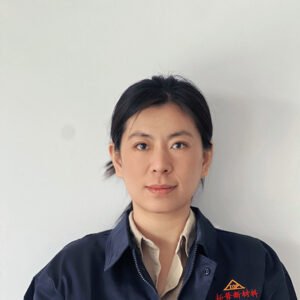Horizontal continuous extrusion companies often encounter the problem of increased mold replacement costs due to core material failure. Creep deformation of copper and copper alloy die cores under high-temperature extrusion fundamentally stems from mismatches between material properties and operational requirements. This article systematically analyzes core dimensions for the core material selection based on horizontal continuous extrusion technology characteristics. Enterprises are provided with scientific material selection criteria by comparing technical parameters and suitable applications of three mainstream materials.
Technical Correlation Between Horizontal Continuous Extrusion Technology and Die Cores
As a highly efficient metal plastic forming process, horizontal continuous extrusion utilizes friction force to drive copper billets through continuous plastic deformation under high-temperature, high-pressure conditions, enabling stable production of copper busbar products with consistent cross-sections. This technology offers advantages such as high production efficiency and streamlined processes, finding widespread application in electrical cables, heat dissipation profiles, transportation copper fittings, and other fields.
The extrusion mandrel (also known as the core rod or mandrel) is the core functional component of the horizontal continuous extrusion system, playing a decisive role in forming hollow or complex internal cavity profiles. Its technical performance directly determines product dimensional accuracy and surface roughness while withstanding operating temperatures of 450-800°C, extrusion pressures exceeding 1000MPa, and intense friction generated by high-speed metal billet flow. Consequently, the performance parameters, microstructure, and manufacturing precision of die core materials ensure production stability, die life, and product yield rates.
Core Technical Dimensions for Die Core Material Selection
The core material selection must be based on specific extrusion conditions, comprehensively evaluating five technical dimensions to ensure precise alignment between material properties and operational requirements.
Wear resistance is the fundamental indicator for suppressing die core wear failure, requiring resistance to sliding friction and abrasive wear caused by high-speed metal billet flow. Copper alloy extrusion occurs around 600-800°C, demanding stringent red hardness. Cobalt alloys maintain hardness above 38 HRC even at 800°C, whereas H13 tool steel exhibits significant tempering softening beyond 600°C. Toughness must balance with hardness to withstand thermal stresses and mechanical impacts during extrusion start/stop cycles and profile forming, preventing brittle fracture of the die core. Cobalt alloys, for instance, exhibit superior toughness compared to cemented carbides, making them better suited for complex cross-section forming applications. Corrosion resistance must address intermetallic adhesion wear and chemical corrosion caused by the heightened reactivity of copper and aluminum billets at high temperatures. Cobalt alloys offer outstanding corrosion resistance.
Finally, Enterprises need to consider cost-effectiveness. Although cobalt alloys have a higher unit purchase price, their service life in copper extrusion scenarios can be several times longer than that of H13 tool steel. They also significantly reduce unplanned downtime losses, resulting in a more advantageous long-term comprehensive cost.
Technical Characteristics and Suitable Applications of Mainstream Core Materials
- H13 Series Hot-Work Tool Steel
H13 (AISI standard) and its equivalents SKD61 (JIS standard), 4Cr5MoSiV1 (GB standard), and 1.2344 (DIN standard) represent the most widely used hot-work tool steels. Their typical chemical composition (mass fraction) is: C 0.32-0.45%, Si 0.80-1.25%, Cr 4.75-5.50%, Mo 1.10-1.75%, V 0.80-1.20%. After heat treatment, the working hardness can reach 48-54 HRC. The core advantage of this material lies in its balanced, comprehensive properties, offering good toughness and resistance to thermal cracking. It also features excellent machinability and polishability, relatively low manufacturing costs, and outstanding cost-performance. Technical limitations include insufficient high-temperature performance; hardness and strength significantly decrease when operating temperatures exceed 600°C. Consequently, these materials are unsuitable for high-temperature continuous extrusion of copper and copper alloys, primarily serving as extrusion dies for aluminum, magnesium, and zinc alloys. - Cemented Carbide
Cemented carbide utilizes tungsten carbide (WC) as its hard phase, which is fabricated through powder metallurgy processes. Typical grades include YG8, YG15, and YG20. Performance is optimized by adjusting cobalt (Co) content (5-20%) and WC grain size—lower Co content and finer WC grains yield higher material hardness (reaching HRA 85-90). Its core technological advantage lies in exceptional wear resistance, 10-20 times that of H13 tool steel, coupled with high thermal conductivity that facilitates rapid heat dissipation during operation. However, the material exhibits poor toughness and is prone to chipping or fracturing under impact loads. Machining complex cross-sections is challenging, and manufacturing costs are high. It is primarily suited for wire drawing, cold extrusion, and components with simple shapes and severe wear in continuous extrusion processes. - Cobalt Alloys
Cobalt alloys feature a Co matrix with elements like Cr, W, and C, specifically engineered for high-temperature, wear, and corrosion environments.
Their core technological advantage lies in exceptional high-temperature performance, maintaining high hardness and strength above 800°C while offering superior resistance to high-temperature oxidation, metal adhesion, and corrosion. Their toughness surpasses that of WC-Co-based cemented carbides. However, they carry higher procurement costs and present significant machining challenges, making them primarily suitable for high-temperature continuous extrusion of copper and copper alloys.


